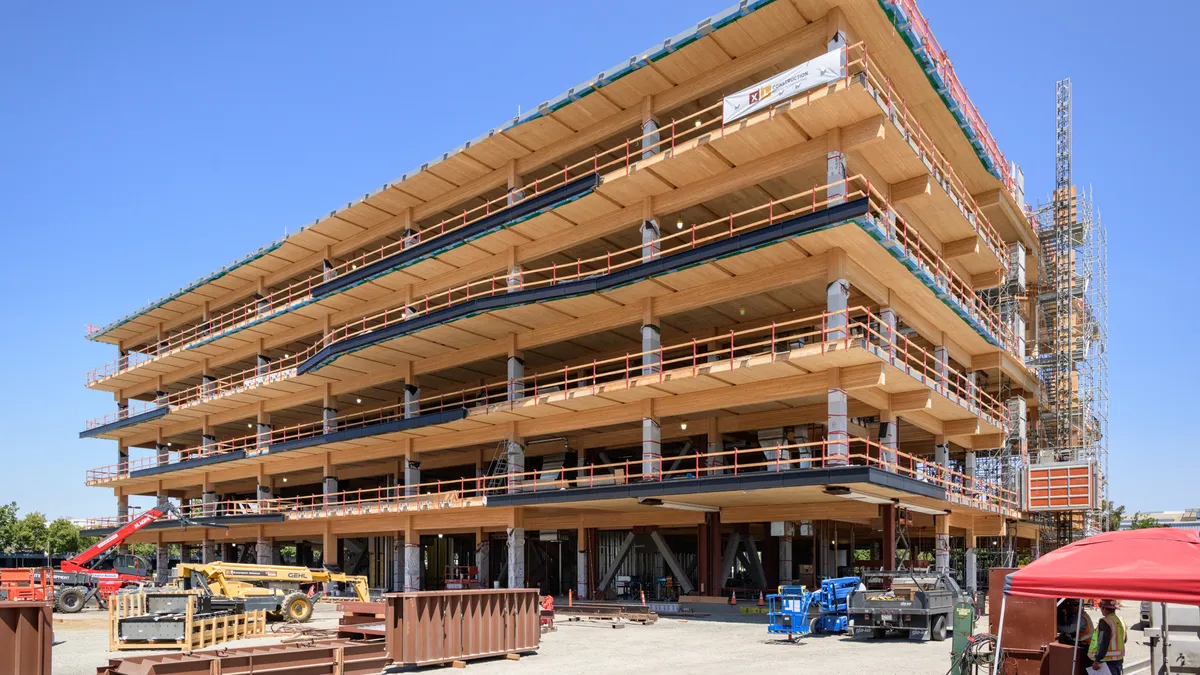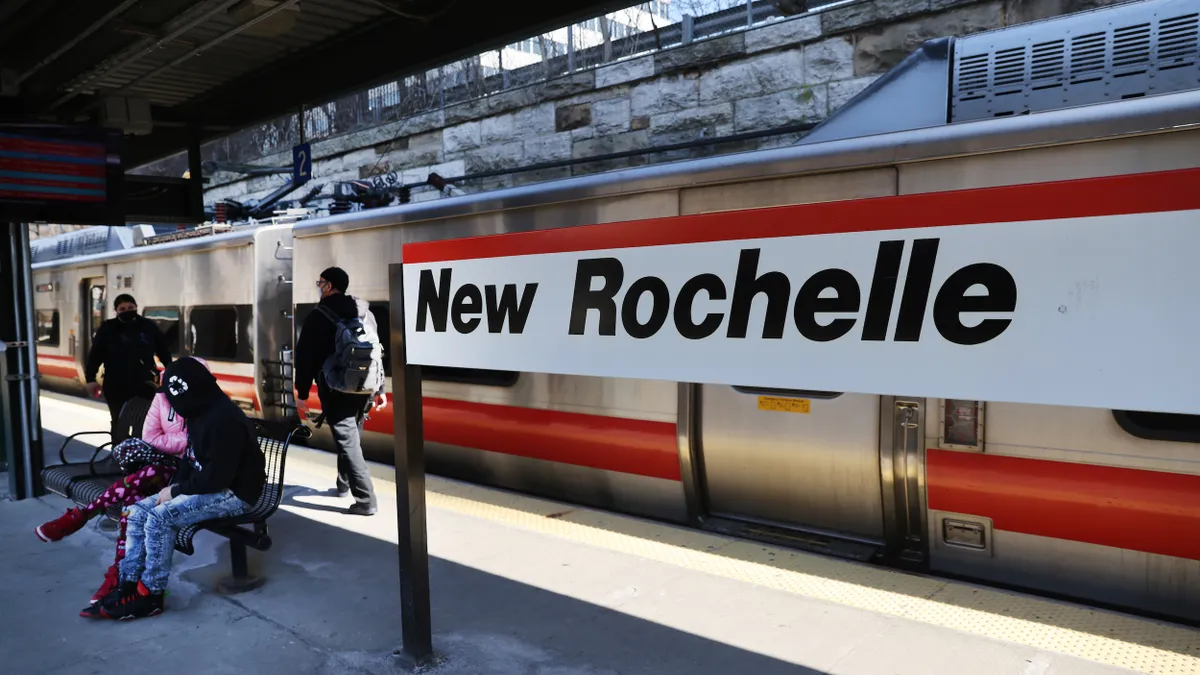A Chicago high-rise will soon become one of more than 1,500 known mass-timber buildings already constructed or currently being designed around the U.S.
Construction projects using the natural wood product have surged in recent years. According to data provided by the trade group WoodWorks—Wood Products Council, the number of completed or planned mass timber building projects in the U.S. grew from 63% between June 2020 and June 2022.
Mass timber as a building material has appealed to architects, developers and sustainability advocates because it boasts a low-carbon footprint and sequesters excess carbon from the atmosphere throughout its lifetime. Various types of mass timber products are made using wood panels nailed or glued together for strength and stability.
“Wood has a softer footprint on the earth” than steel or concrete, said Paul Alessandro, a partner with Hartshorne Plunkard Architecture, which designed the nine-story Chicago building expected to break ground early next year.
There are many advantages to building with mass timber, in addition to reduced carbon emissions, according to Alessandro. “Wood is a product that people are drawn to naturally. It’s warmer. It helps reduce sound.”
And, he said, a mass-timber building can be recycled. “You can disassemble it, take it apart and reuse individual elements.’’
The Great Chicago Fire of 1871 may have long made the city leery of wood as a building material, according to Julie Goudie, director of communications for Sterling Bay, the project’s developer.
But advancements in fire-resistant technologies help make now the right time for reassessment, Goudie said. “Mass-timber buildings are not only safe, but also sustainable and beautiful. Timber is renewable, global, and can be easily harvested and sustainably managed to assure regrowth and replenishment.”
Wood reduces a building’s carbon footprint in two ways, according to Ricky McLain, senior technical director for WoodWorks.
First, McLain said, “a tree in the forest sequesters carbon. It is storing carbon as it’s growing. Cut it down and the tree doesn’t lose any carbon. Turn it into a panel and it is still storing carbon. These buildings are storing carbon, not releasing it into [the] atmosphere.”
Second, wood products typically require less “embodied energy” to manufacture than other building materials, he said. The term refers to the energy consumed by all of the processes associated with the production of a building.
Life cycle assessment studies consistently show that buildings with wooden structural systems have a lower embodied carbon footprint than buildings made with other materials, McLain said. “You can quantify it. You can compare it with using steel and concrete. Wood has a lighter carbon footprint.”
A 2019 study published in the Journal of Building Engineering found that replacing concrete and steel with a type of mass timber in the building structure can present significant environmental benefits including “an average of 26.5% reduction in global warming potential,” according to the study.
McLain said mass-timber buildings have tended “to be centered around ‘wood baskets’— areas that have a lot of timber framing like the Northeast or have a lot of harvesting and manufacturing like the Southeast and Northwest.”
But projects are springing up in all 50 states, according to the council. Milwaukee recently laid claim to the world's tallest mass-timber building — the Ascent, a 25-story apartment building.
Where mass-timber structures can be constructed depends on building codes. And U.S. building codes “are piecemeal,” according to Kenneth Bland, retired vice president of building codes and regulations for the American Wood Council.
States and municipalities that want to allow taller mass-timber buildings are considering adopting the expanded mass timber provisions in the 2021 International Building Code. Early adopters of these updated building codes have tended to be in Western states, added Bland, who is now a consultant.
In Chicago, on the other hand, until recently “they were running off the 1940s building code,” Bland said. In April 2019, the Chicago City Council adopted a more updated version of the IBC. Building codes require all building systems to perform to the same level of safety, Bland noted, regardless of the type of material.
“All the testing we’ve done in the past five years has shown mass-timber has very good fire performance. It’s going to perform as well as any high-rise building,” Bland said.



















